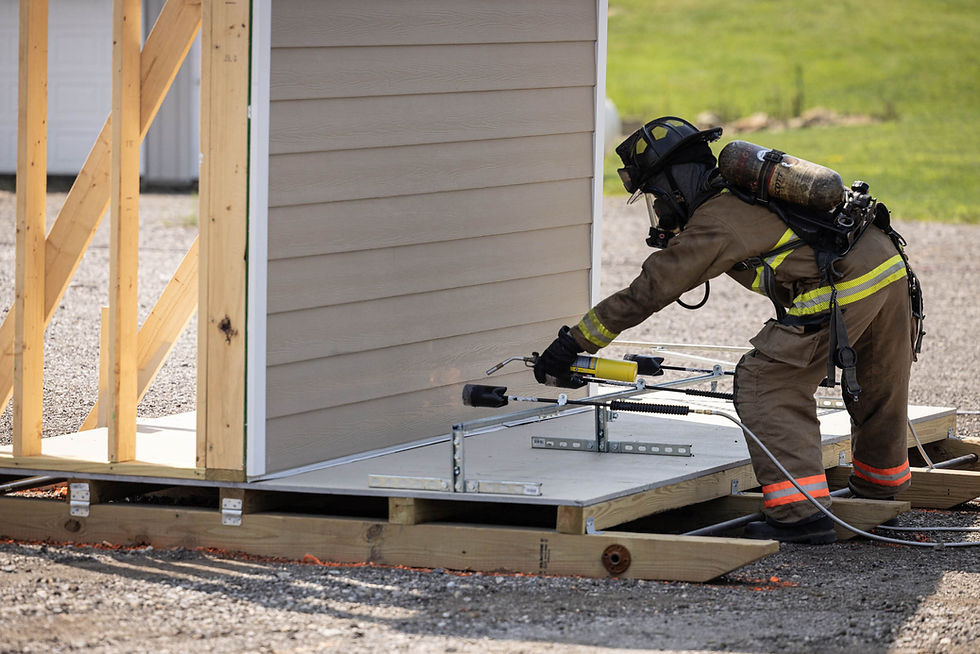Fire-Resistant Materials for Construction in California
- First Round Construction

- Jan 20
- 3 min read
Updated: May 29
California's fire season has become increasingly intense over the years, emphasizing the importance of using fire-resistant materials in construction. Whether you're building a new home or renovating an existing one, selecting the right materials can significantly improve your property’s resilience against wildfires. Here’s a guide to understanding fire-resistant materials, what to look for, and the best practices to ensure your home is as protected as possible.

What Are Fire-Resistant Materials?
Fire-resistant materials are specially designed to withstand high temperatures and slow the spread of fire. They provide critical time for residents to evacuate safely and for firefighters to respond. These materials are classified based on their ability to resist ignition, maintain structural integrity, and reduce heat transfer.
Some common fire-resistant materials include:
Concrete: Highly durable and non-combustible, concrete is an excellent choice for walls, floors, and roofing.
Brick: Another non-combustible material, brick offers both fire resistance and aesthetic appeal.
Gypsum (Type X): This drywall contains non-combustible fibers that improve its fire resistance.
Metal Roofing: Metal roofs, such as steel or aluminum, are fireproof and long-lasting.
Fire-Rated Glass: Used for windows and doors, fire-rated glass can endure high temperatures without breaking.
Fiber Cement Siding: A mixture of cement, sand, and cellulose fibers, this material is non-combustible and low-maintenance.
Treated Wood: Wood that has been pressure-treated with fire retardants can significantly slow the spread of flames.
What to Pay Attention To
When selecting fire-resistant materials, consider the following factors:
Fire Ratings: Materials are rated based on their performance in standardized fire tests. Look for materials with a Class A fire rating, which provides the highest level of resistance.
Building Codes: Ensure all materials meet California’s Wildland-Urban Interface (WUI) building codes. These codes mandate specific fire-resistant standards for homes in high-risk areas.
Installation Quality: Even the best materials won’t perform as expected if improperly installed. Work with licensed contractors who understand fire-resistant construction techniques.
Compatibility: Choose materials that complement each other in terms of fire resistance. For example, pairing fire-rated glass with non-combustible window frames enhances overall protection.
Maintenance: Some materials, like treated wood, may require periodic reapplication of fire retardants to maintain effectiveness.
Best Practices for Fire-Resistant Construction
Defensible Space: Maintain a clear area around your home by removing flammable vegetation and debris. This reduces the risk of fire reaching your structure.
Roofing: Install a fire-resistant roof, as this is one of the most vulnerable parts of a home during a wildfire.
Ember Protection: Use metal mesh screens over vents and under eaves to prevent embers from entering your home.
Non-Combustible Cladding: Choose materials like fiber cement siding or stucco for exterior walls.
Windows and Doors: Opt for double-paned, tempered glass and fire-rated doors to minimize heat transfer and the risk of breakage.
Gutters: Use metal gutters and ensure they are regularly cleaned to prevent the accumulation of flammable debris.
How Fire-Resistant Materials Can Save Your Home
Fire-resistant materials act as the first line of defense during a wildfire. They slow the spread of fire, giving emergency responders more time to act and minimizing damage. Homes built or retrofitted with these materials often fare better in wildfires, reducing the risk of total loss. Additionally, investing in fire-resistant construction can lower insurance premiums and increase property value.
Conclusion
In fire-prone areas like California, incorporating fire-resistant materials into your construction projects is not just a safety measure—it's a necessity. By understanding your options and following best practices, you can create a home that stands strong in the face of wildfire threats.
%20(1).png)



Comments